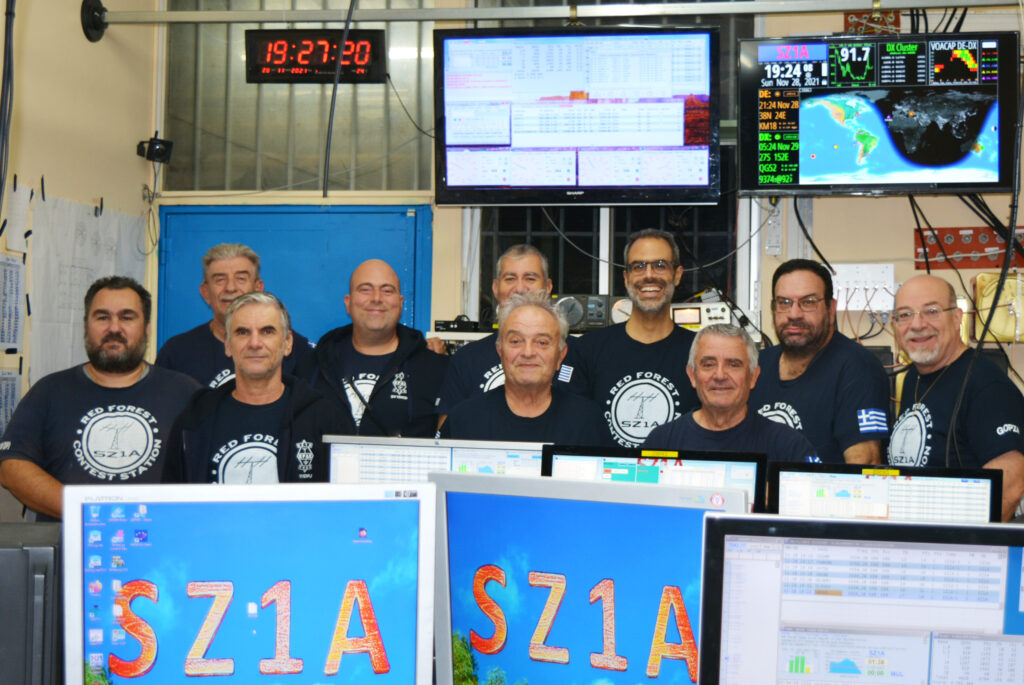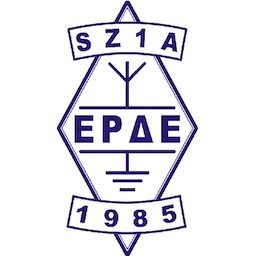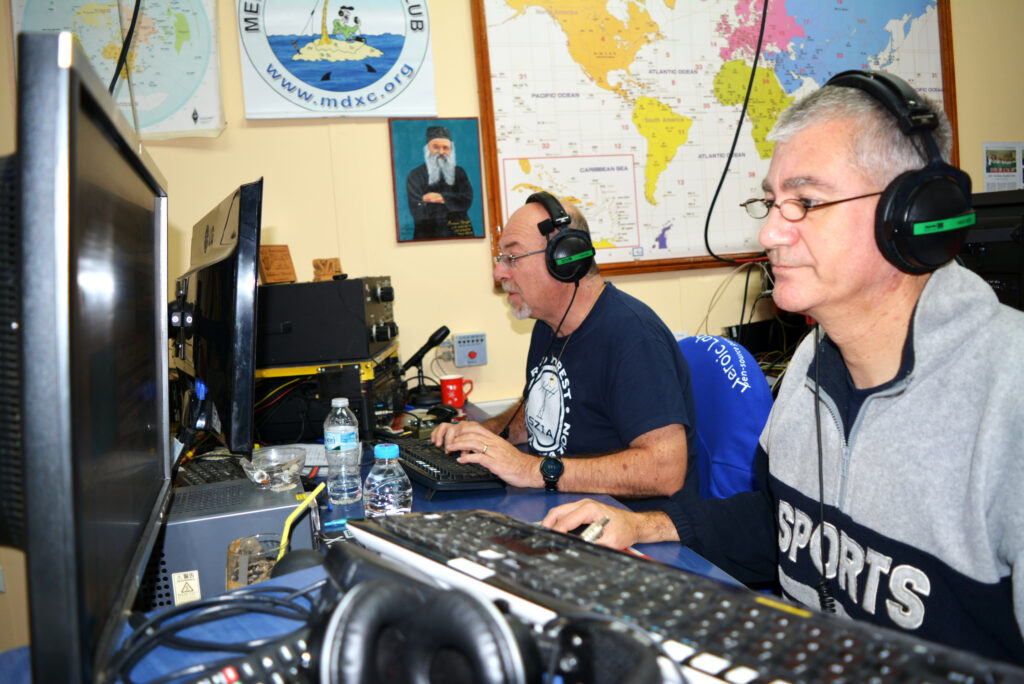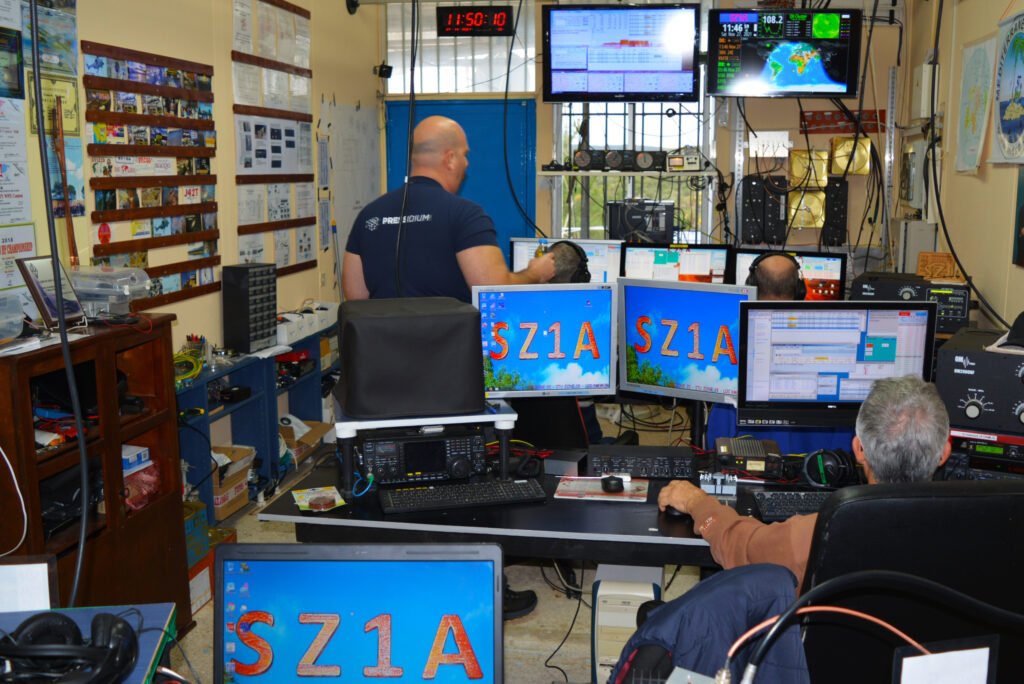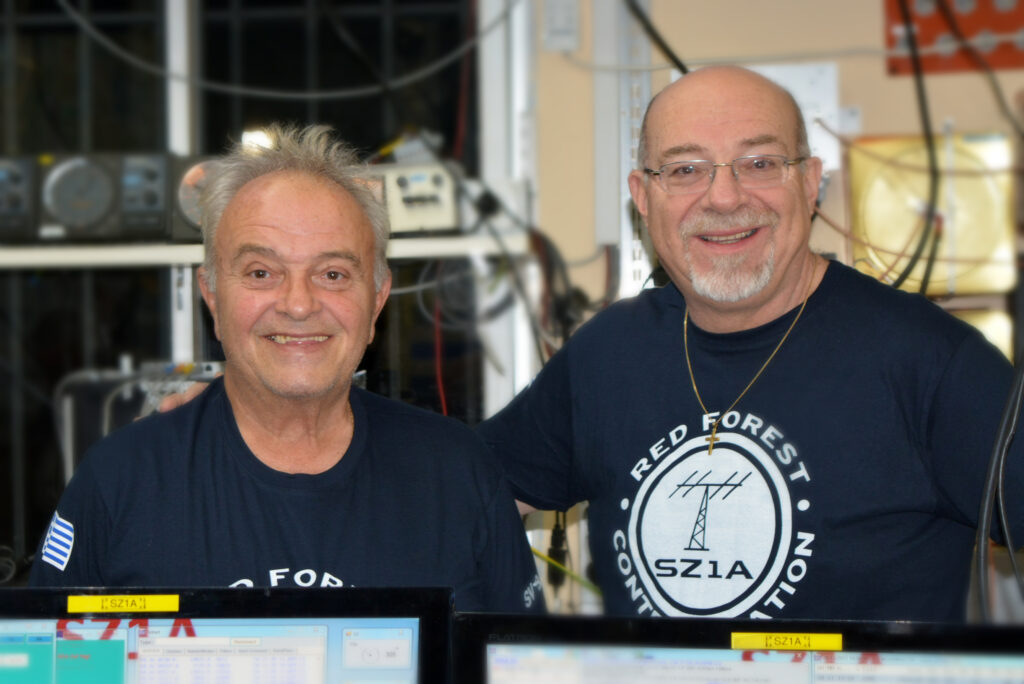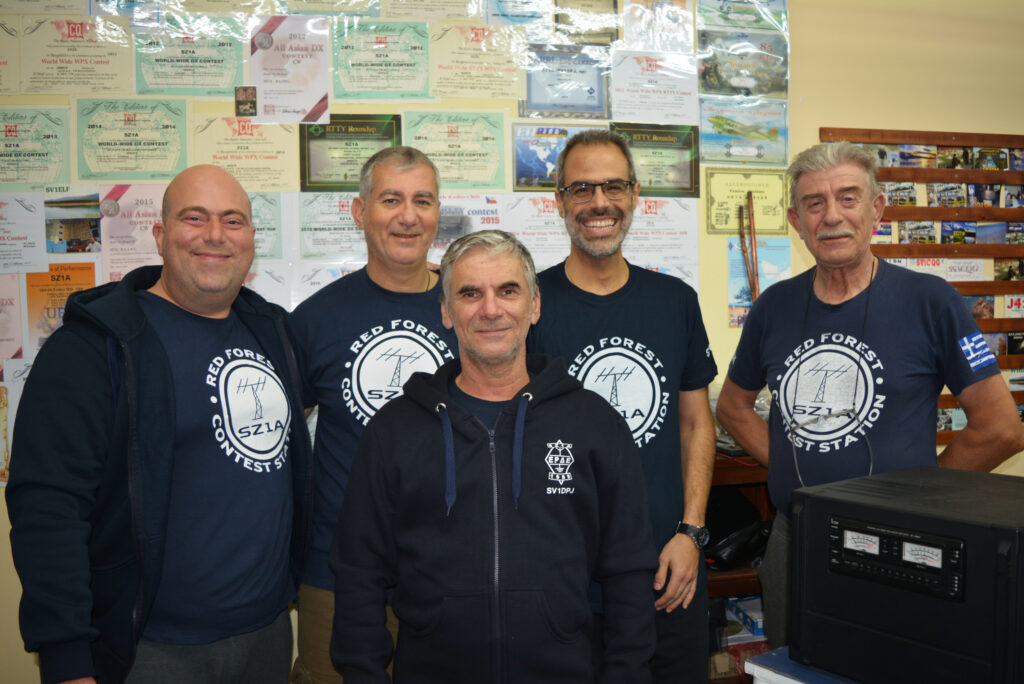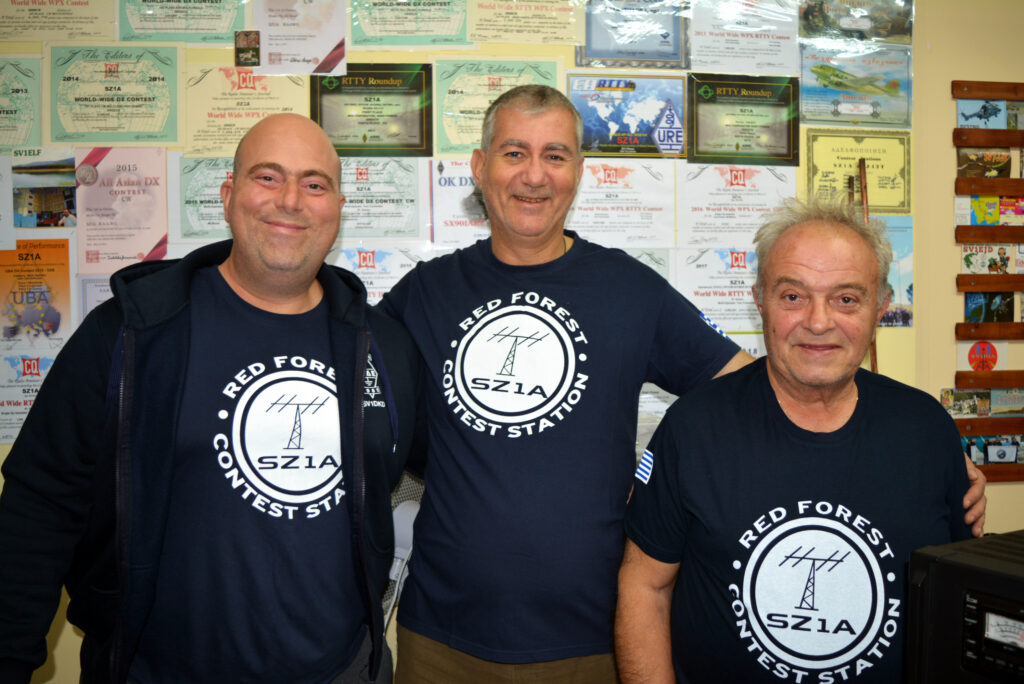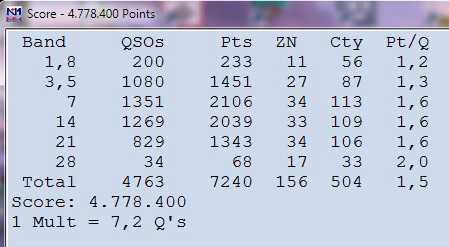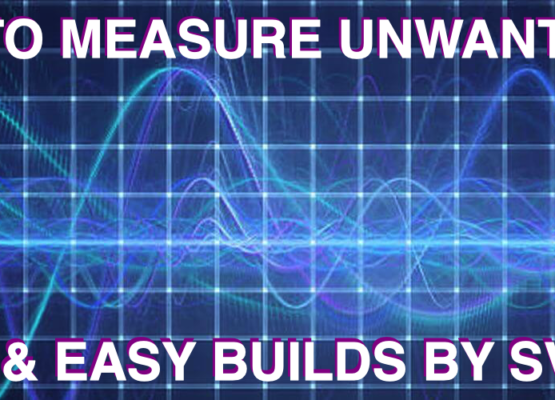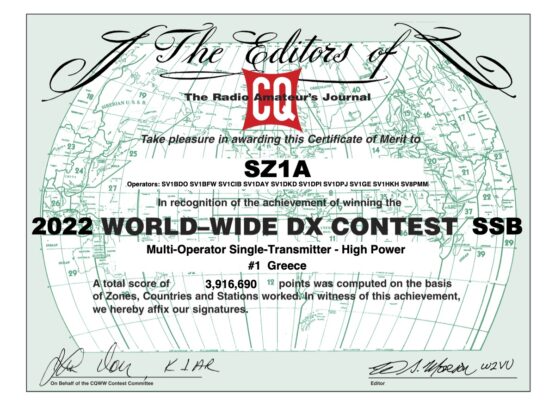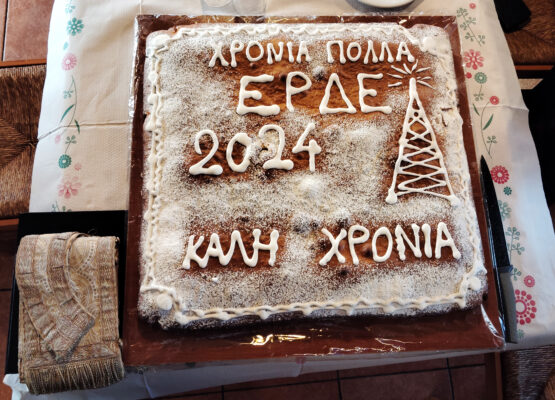After the October SSB leg of the Contest, which served as a test and the station did well and without much trouble, we anxiously awaited for the CQ WW CW Contest to try and make a good entry and score. After all, it is well known that we enjoy the CW contest more in recent years.
During the lockdown due to covid19 we continued our plan to improve the station. Of course, everything slowed down due to the inevitable less participation of our members, but we continued. The thing is that due to our non-participation in competitions, it was not possible to fully check the changes for any problems, nor the station in general. Radio amateurs work well and reliably in emergencies, not just because they are trained to do so but also because their station is always ready for battle, tested daily. At a club station, under normal circumstances, the same thing happens, but the previous period was difficult.
So, for example, the repairs that required teamwork, such as the 40m beam antenna, the 80m vertical, the beverages that were cut, etc are unfinished. At the same time some noise and interference that has appeared in the area was not immediately detected and now it is difficult for the source to be found. Where we used to have noise levels at the station of zero, we now had 9 plus 30 noise on 160m, 3-4 s-units at 20m, and S9 at intervals on 10 and 15m! Finally the changes we made, such as the new RF grounding, automation in the rotors and antenna switching, new amplifier, microHAM interfaces, new radios, etc. were also not fully tested.
In the CQ WPX CW Contest in May, we got our feet wet by running with just one station, and in CQ WW SSB in October we did a better test involving more stations, so now in the CW leg of the contest, we played properly, with three fully functional stations now: The Run station, The Inband Station and The Multiplier Station. Almost everything went well. Of course, we were anxious since until the last minute we were working, soldering connectors and installing new earthing/RF-Ground, hunting down RFI… but generally everything went extremely well.
The Yaesu FT-1000 MKV and FT-990 are much better radios, and we know them better, interfaces and automation made our lives easier, N1MM+ became our new partner and also made it easier for us as most of our operators know how to use it, the new amplifier is more efficient, etc. We missed the 40m Yagi beam antenna… It’s nice to have a yagi on this band. When we had it we always said that we want more, more elements, full size etc… but now we appreciate its value, even if our dipole did unexpectedly well.
Two minor problems that arose had to do with RF at station 7 (the shack server), which is the one that has central control of switches and rotors. Fortunately, a ferrite solved one problem and with a little care, we lived with the second. However, the conclusion is that the grounding of this station requires a little more work. We promise a very enlightening article shortly around RF grounding. We have accumulated a lot of experience lately, a lot of experiments and a lot of knowledge, which we are eager to share with you. We are just still learning…
With the noise we still did not find a full resolution despite the measures we took. The problem on 20m was from a switching power supply that supplied power to an Ethernet switch. That was solved. The noise on 10m and 15m has a periodicity, it could be from a refrigerator, it is not from us but it makes it difficult for us to find it. It comes for 10 minutes and then disappears… On 160m the very loud noise seems to be from the external Telephone line (!!DSL maybe?). On Saturday night after very heavy rain, something got “washed” and made better contact, and the noise fell to 7 units. So we were able to do some mults on 160m. This interference needs more investigation adn will most likely be the one more difficult to unravel, especially if a utility service is involved…
Otherwise, everything was wonderful. We all got together on Friday (this is not always a given) and left on Monday. This gives flexibility in shift training. We had a lot of runners and fewer to enjoy the mult station and that cost us a bit, but everyone who came is great for company and that compensated us for the few points we may have lost. Everyone was vaccinated with a self or rapid test for COVID19 and so we had even more confidence. The chef and grill master’s food was better than ever, on Saturday the new t-shirts and jackets came (which we really liked), and we are generally happy all weekend, getting away from the every-day routine of each ones life.
Ultimately this is team contesting. Our hobby is lonely in most of its moments: the operator and his radio. But when all these people get together and are loved, they are in a good mood and something unites them, they enjoy it, have a good time and make good scores! Because yes, we achieved a good score without much effort. We happily discovered, that score that we used to have to try hard to achieve, the station now gives us the opportunity to achieve it with less effort and more fun!
For the record, the operators were Garo G0PZA, Vasilis SV1BJW, Dennis SV1CDN, Dimitris SV1CIB, Andy SV1DKD, Kostas SV1DPI, Vasilis SV1DPJ, Cliff SV1JG, and cook and grill master (we can not do without them) Sotiris SV1BDO and Thanasis SV1CQK. Hmmmm… are we definitely Greeks without a single George?
